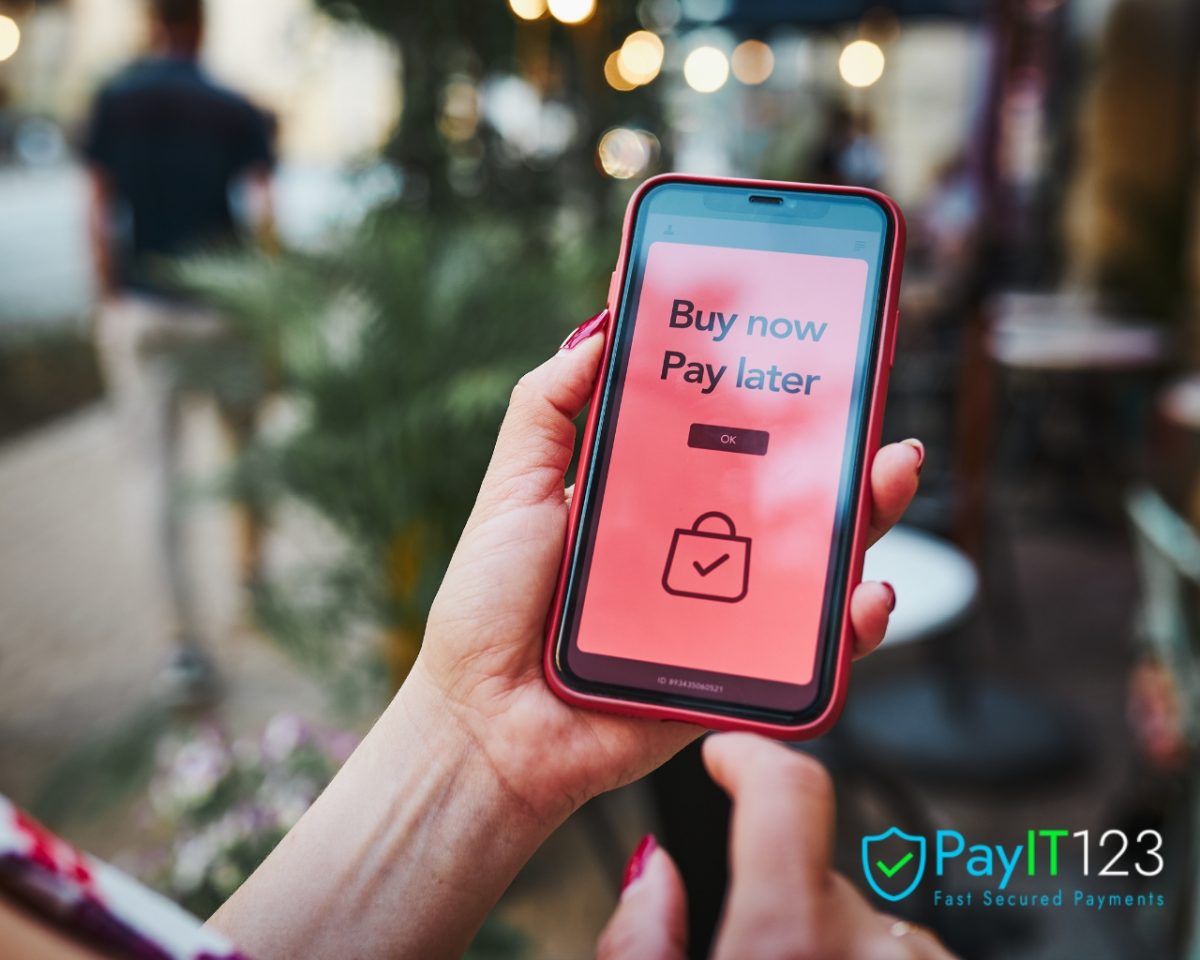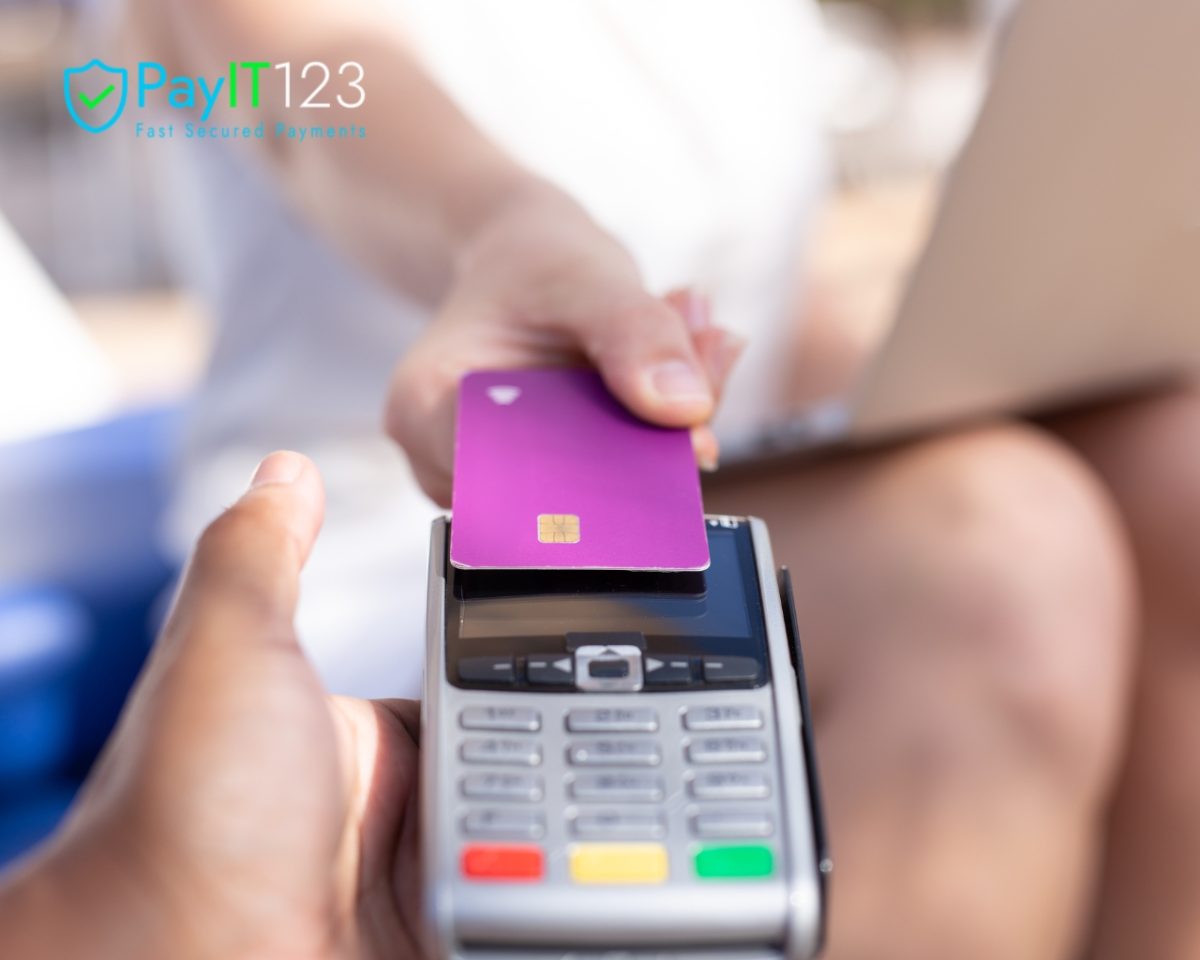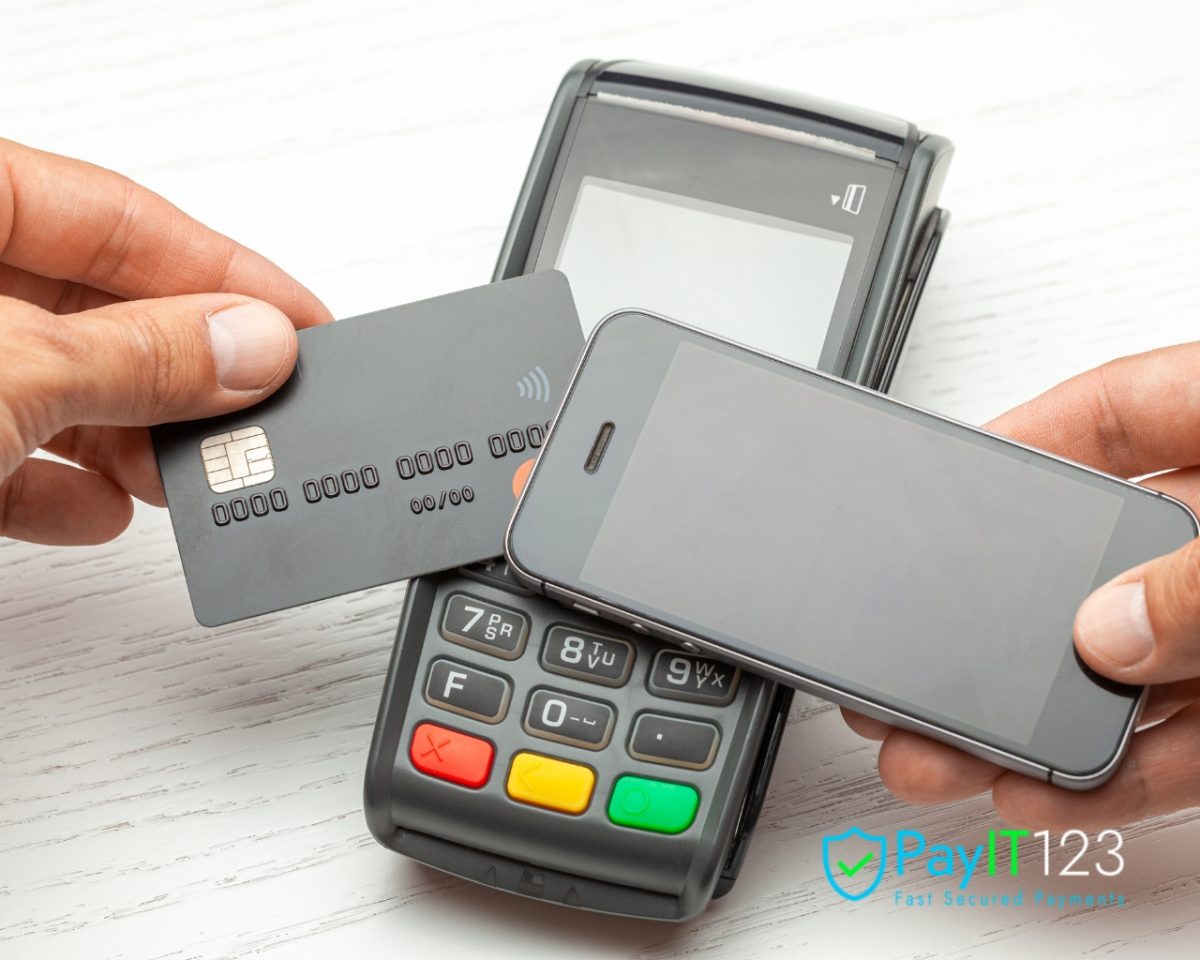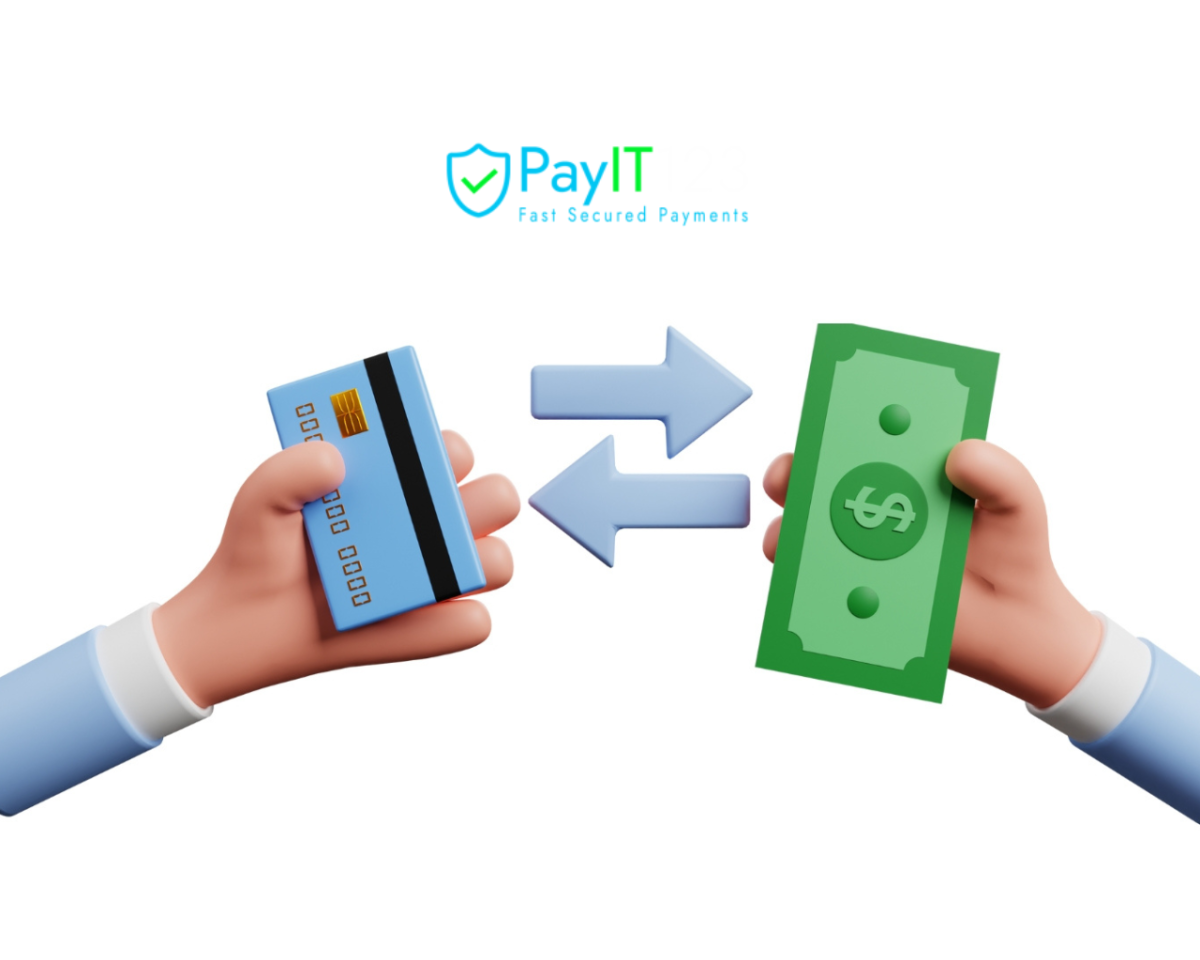Introduction
This blog discusses the rise of Buy Now, Pay Later (BNPL) services in retail, highlighting their potential benefits for retailers and the key considerations before implementing this payment solution, which allows consumers to purchase items immediately without interest.
Benefits of BNPL for Retailers
Increased Conversion Rates
BNPL can significantly boost conversion rates by reducing the immediate financial burden on customers. Shoppers are more likely to complete a purchase if they do not have to pay the full amount upfront. This is particularly effective for higher-priced items, as it makes them more accessible to a broader audience.
Higher Average Order Values
With the flexibility to spread payments over time, customers are more likely to add more items to their cart or opt for higher-priced products than they would with a traditional single-payment approach. BNPL can effectively increase the average order value (AOV), thereby enhancing overall sales and revenue.
Enhanced Customer Experience
Offering BNPL can improve the shopping experience by providing greater financial flexibility. This service meets the needs of budget-conscious consumers and can help build customer loyalty as shoppers appreciate the convenience and personalized purchasing options.
Attracting Younger Consumers
BNPL is especially popular among Millennials and Gen Z consumers, who often prefer not to use credit cards. These demographics appreciate the transparency and control that BNPL services offer, making them a significant target group for retailers looking to expand their customer base.
Considerations for Implementing BNPL
Integration and Operational Complexity
Integrating BNPL solutions into existing payment systems can be complex. Retailers need to ensure that their e-commerce platforms can seamlessly incorporate these services without disrupting the checkout process. This might require significant technical updates or partnerships with third-party BNPL providers.
Financial Risk and Cost
While BNPL services generally transfer the risk of non-payment to the provider, there are associated costs that retailers must consider. Providers typically charge a fee for each transaction, which can be higher than traditional payment processing fees. Retailers need to assess whether the increase in sales justifies these costs.
Regulatory Compliance
BNPL services are becoming a focus of regulatory scrutiny due to concerns about consumer debt. Retailers must stay informed about legal regulations that could affect how they offer BNPL options, including requirements for clear communication of terms and conditions to customers.
Impact on Customer Debt
Offering BNPL can encourage spending that some customers cannot afford, potentially leading to debt issues. Retailers should consider ethical implications and ensure transparent communication about the terms of BNPL, helping consumers make informed financial decisions.
Conclusion
Retailers can benefit from implementing Buy Now, Pay Later (BNPL) options, leading to increased sales, customer satisfaction, and younger consumer access. However, careful integration, cost, and ethical considerations must be considered for successful implementation.
#BuyNowPayLater #RetailInnovation #Ecommerce #CustomerExperience #RetailTechnology #Fintech #MillennialShopping #GenZ #DebtManagement #PaymentSolutions
Category: Technology
Enhancing Checkout Security with Tokenization and Encryption
Introduction
Tokenization and encryption are crucial technologies for securing online transactions in the digital age and protecting sensitive customer data from unauthorized access, making them essential for online retailers.
Understanding Tokenization
Tokenization is the process of replacing sensitive data with a non-sensitive equivalent, known as a token, which has no extrinsic or exploitable meaning or value. The token is a randomly generated string of characters that represents the original data within a specific system. Here are some key points about tokenization:
Data Protection
Tokenization safeguards sensitive data by securely storing it in a vault, reducing the risk of data breaches during transactions.
Compliance Ease
Tokenization simplifies compliance with PCI DSS regulations, as tokens are not considered sensitive data, reducing the scope of PCI requirements for businesses.
Versatility Across Platforms
Tokens can be used safely across different platforms and channels, making them extremely versatile for businesses that operate both online and offline payment systems.
Understanding Encryption
Encryption involves encoding data so that only authorized parties can access it. This is achieved by converting the original data into an encoded version using an algorithm and a key, which are needed to decrypt the information. Here are the essential aspects of encryption:
End-to-End Security
Encryption provides end-to-end security for data in transit, ensuring that data sent from a customer’s device to the server is protected against interception and tampering.
Strong Data Defense
Strong encryption algorithms are virtually impossible to break without the decryption key, providing a robust defense against data theft and exposure.
Integrating Tokenization and Encryption for Checkout Security
Integrating both tokenization and encryption provides a dual layer of security that can safeguard against various types of cyber threats. Here’s how these technologies can work together to enhance checkout security:
Secure Data Entry
Encryption secures customer payment information, allowing it to be tokenized for further processing, such as payment authorization, upon delivery to the server.
Reduced Data Breach Impact
Tokenization and encryption minimize data breach impact by making encrypted data difficult to decrypt without a key, and tokenized data useless outside specific transaction contexts.
Seamless Customer Experience
Implementing these technologies does not impede the customer experience. The checkout process remains smooth and fast as tokenization and encryption operate seamlessly in the background.
Considerations for Implementation
While tokenization and encryption greatly enhance security, they require proper implementation and management:
● Key Management: Securely managing encryption keys is crucial to preventing unauthorized access.
● Token Management: Maintaining a secure and compliant token vault is essential for effective tokenization.
● Up-to-date Practices: As technology evolves, so do hacking techniques. Regularly updating security measures and practices is necessary to stay ahead of threats.
Conclusion
Tokenization and encryption enhance checkout security, protecting customer data, building trust in e-commerce platforms, and ensuring compliance and a secure shopping environment.
#CyberSecurity #Tokenization #Encryption #EcommerceSecurity #OnlinePayments #DataProtection #PCICompliance #RetailTech #SecureCheckout #TechInnovation
Cross-Border Payments: Overcoming Challenges in International Transactions
Introduction
This blog post discusses the challenges of cross-border payments in the globalized economy, offering practical solutions to streamline and optimize these processes.
1. Understanding the Challenges
Regulatory Compliance
Cross-border payments management faces challenges in complying with diverse regulatory requirements, including currency transactions, AML protocols, and CTF standards, due to their complexity and variability.
Currency Fluctuations
Exchange rates can significantly impact international transactions. Currency values fluctuate due to various economic factors, leading to potential financial loss or gain. Managing this currency risk is essential for businesses and individuals engaged in international trade.
High Costs and Fees
Cross-border payments often incur higher fees due to bank charges, currency exchange rates, and intermediaries, impacting business profitability and affecting international operations.
Transaction Delays
Unlike domestic transactions, international payments can suffer from delays that impact cash flow and operational efficiency. These delays are often due to the need for manual processing, multiple intermediary banks, and time zone differences.
Lack of Transparency
There is often a significant lack of transparency in the status and details of cross-border transactions. This opacity can be frustrating and problematic, making it difficult to track payments and resolve disputes.
2. Strategies to Overcome Challenges
Leveraging Technology
Financial technology advancements like blockchain offer decentralized, transparent, and cost-effective solutions for cross-border payments, bypassing traditional intermediaries and enhancing processing speed.
Choosing the Right Partners
Selecting financial partners and platforms that specialize in international transactions can alleviate many common issues. These partners often provide better exchange rates, lower fees, and enhanced services tailored to global business needs.
Managing Currency Risk
To handle volatility in currency exchange, businesses can use financial instruments such as forwards, futures, options, and swaps. These tools can help lock in exchange rates or hedge against potential fluctuations, providing more predictable financial outcomes.
Improving Operational Efficiency
Automating payment processes and integrating international payment systems into enterprise resource planning (ERP) software can significantly enhance operational efficiency. Automation reduces the risk of errors and speeds up transaction times.
Enhancing Transparency
Real-time transaction tracking platforms enhance cross-border payment transparency, enabling better management and dispute resolution for businesses and individuals by providing real-time tracking and reporting of transactions.
3. The Future of Cross-Border Payments
The future of cross-border payments looks promising, with continuous innovations in payment technology. The rise of digital currencies and increased regulatory cooperation between countries could further streamline international transactions. As businesses and financial institutions adopt these advanced technologies, we can expect a more efficient, transparent, and cost-effective global payment landscape.
Conclusion
Cross-border payments are crucial for global commerce, and understanding their challenges and implementing strategic solutions can enhance efficiency and security. Technology adoption and selecting suitable financial partners are essential steps for success in the global market.
#CrossBorderPayments #InternationalBusiness #Fintech #Blockchain #CurrencyRisk #GlobalTrade #FinancialTechnology #PaymentSolutions #EconomicGlobalization #DigitalCurrency
The Future of Card Payments: Trends in Contactless and Mobile Payments for Retailers
Introduction:
This blog post explores the evolving landscape of card payments, focusing on contactless and mobile payments as key trends for retail transactions, their implications for retailers, and strategies to stay ahead in the digital world.
Trends in Contactless and Mobile Payments:
1. Contactless Payments: Contactless payments, also known as tap-and-go or NFC (near-field communication) payments, allow consumers to make transactions by simply tapping their contactless-enabled cards or mobile devices on a compatible payment terminal. This technology eliminates the need for physical contact with the payment terminal or the exchange of cash, making transactions faster, more convenient, and hygienic—especially in light of the COVID-19 pandemic.
2. Mobile Wallets: Mobile wallets, such as Apple Pay, Google Pay, and Samsung Pay, enable consumers to store their payment card information securely on their smartphones and make payments by holding their devices near a contactless payment terminal. Mobile wallets offer added convenience and security features, such as biometric authentication (e.g., fingerprint or facial recognition) and tokenization, which replace sensitive card information with encrypted tokens for added security.
3. QR Code Payments: QR code payments have gained popularity as a convenient and cost-effective payment method, especially in markets where mobile penetration is high. With QR code payments, consumers scan a QR code displayed at the point of sale using their smartphone camera and authorize the transaction using their mobile banking app or mobile wallet. This method eliminates the need for physical cards or payment terminals, making it suitable for both online and in-person transactions.
4. Wearable Payments: Wearable devices, such as smartwatches, fitness trackers, and wristbands, are becoming increasingly equipped with contactless payment capabilities, allowing users to make payments on the go without the need for a smartphone or physical card. Wearable payments offer added convenience and flexibility, particularly for users who lead active lifestyles or prefer minimalist wallets.
Implications for Retailers:
1. Enhanced Customer Experience: Contactless and mobile payments offer retailers an opportunity to enhance the customer experience by providing faster, more convenient, and frictionless checkout options. By embracing these technologies, retailers can reduce wait times, improve customer satisfaction, and drive repeat business.
2. Improved Security: Contactless and mobile payments offer advanced security features, such as tokenization and biometric authentication, which help protect against fraud and unauthorized transactions. Retailers can reassure customers that their payment information is safe and secure, fostering trust and confidence in their brand.
3. Adaptation to Changing Consumer Preferences: As consumers increasingly gravitate towards contactless and mobile payment methods, retailers must adapt to meet their evolving preferences and expectations. By offering a variety of payment options, including contactless cards, mobile wallets, and QR code payments, retailers can cater to a broader customer base and stay competitive in the market.
Strategies for Retailers:
1. Invest in Contactless Payment Infrastructure: Upgrade your point-of-sale terminals to support contactless payments and ensure compatibility with a wide range of contactless cards and mobile wallets. Train your staff to educate customers on the benefits of contactless payments and encourage adoption at checkout.
2. Promote Mobile Wallet Adoption: Encourage customers to use mobile wallets by offering incentives such as loyalty rewards, discounts, or exclusive offers for mobile payments. Display signage and promotional materials highlighting the availability of mobile payment options and the security features of mobile wallets to instill confidence in customers.
3. Embrace Omnichannel Payments: Integrate contactless and mobile payment capabilities across all channels, including in-store, online, and mobile, to provide a seamless omnichannel payment experience. Enable features such as click-and-collect, curbside pickup, and in-app payments to accommodate diverse customer preferences and shopping behaviors.
4. Stay Ahead of Emerging Technologies: Keep abreast of emerging technologies and trends in the payment industry, such as biometric authentication, blockchain, and IoT (Internet of Things) payments. Explore partnerships with fintech companies and payment service providers to leverage innovative solutions that enhance the customer experience and drive business growth.
Conclusion:
Contactless and mobile payments are the future of card payments, allowing retailers to enhance the customer experience, improve security, and adapt to changing consumer preferences. By embracing these trends, retailers can stay competitive in the digital world.
#ContactlessPayments #MobilePayments #FutureOfPayments #RetailTrends #DigitalPayments #PaymentInnovation #CustomerExperience #RetailTech #OmnichannelPayments #PaymentSecurity #QRCodePayments #WearablePayments #Fintech #Ecommerce #RetailTechnology #BusinessStrategy #DigitalTransformation #RetailInnovation #PaymentSolutions
Optimizing Checkout Flow: Best Practices for Retailers to Increase Conversion Rates
Introduction:
The checkout process in e-commerce is crucial for conversion rates and customer retention. Optimizing it can boost online store performance by ensuring a streamlined, intuitive, and hassle-free experience.
Simplify the Checkout Process
The key to improving checkout flow is simplicity, reducing steps, and implementing a single-page checkout. This not only speeds up the process but also provides a clear customer overview.
Offer Multiple Payment Options
Customers have diverse preferences for making payments online, ranging from credit and debit cards to digital wallets and beyond. By offering a variety of payment options, you cater to a wider audience and reduce the likelihood of cart abandonment due to the absence of a preferred payment method. Remember, the more options you provide, the more inclusive your checkout process becomes.
Utilize Guest Checkout Options
Forcing customers to create an account before they can make a purchase is a significant barrier to conversion. While having customers create accounts can be beneficial for marketing purposes, offering a guest checkout option is essential for those who prefer a quicker transaction or are wary of sharing too much personal information.
Optimize for Mobile Users
With an increasing number of consumers shopping on their smartphones, optimizing your checkout flow for mobile users is crucial. This means ensuring that your website is responsive and that forms are easy to fill out on a smaller screen. Consider integrating with mobile wallets to allow for a one-click checkout process, further reducing the friction that can lead to cart abandonment.
Provide Clear and Transparent Pricing
Unexpected costs are one of the top reasons for cart abandonment. Ensure that your customers can see the total cost of their purchase, including shipping and taxes before they begin the checkout process. Offer free shipping or state shipping costs upfront to avoid any surprises during checkout.
Enhance Security Measures
Security concerns are paramount for online shoppers. Displaying security badges and using SSL certificates can reassure customers that their personal and payment information is safe. Additionally, consider implementing security measures like two-factor authentication for a safer checkout experience.
Conduct Regular Testing and Analysis
Finally, the optimization of your checkout flow should be an ongoing process. Regularly test different elements of your checkout process, from button colors to form fields, to see what works best for your audience. Use analytics to track where customers drop off and conduct A/B tests to find more effective solutions.
Conclusion
Optimizing your checkout flow is a crucial step toward increasing conversion rates and achieving e-commerce success. By simplifying the process, offering multiple payment options, ensuring mobile optimization, and focusing on security, retailers can provide a seamless checkout experience that encourages customers to complete their purchases. Remember, every small improvement in the checkout process can lead to significant gains in customer satisfaction and sales.
#CheckoutOptimization #IncreaseConversionRates #EcommerceSuccess #SimplifyCheckout #MobileOptimization #GuestCheckout #SecurePayments #TransparentPricing #PaymentOptions #UserExperience #RetailBestPractices #OnlineShopping #EcommerceTips #CartAbandonment #RetailInnovation
How to Choose the Right Payment Gateway for Your Online Store
Introduction:
This blog post discusses the importance of selecting the right payment gateway for e-commerce success. It highlights the need for careful consideration of factors like security, cost, features, and compatibility with the e-commerce platform, offering practical tips to help make the right choice.
Factors to Consider When Choosing a Payment Gateway:
1. Security: Security is paramount when it comes to online payments. Look for a payment gateway that employs robust security measures, such as encryption, tokenization, and fraud detection tools, to protect sensitive payment data from unauthorized access or cyberattacks. Ensure that the payment gateway is PCI compliant and adheres to industry-standard security protocols to safeguard your customers’ information.
2. Compatibility: Ensure that the payment gateway is compatible with your e-commerce platform or shopping cart software. Most payment gateways offer plugins or integrations for popular platforms like Shopify, WooCommerce, Magento, and BigCommerce. Verify compatibility with your platform and ensure seamless integration to provide a smooth checkout experience for your customers.
3. Payment Methods: Consider the types of payment methods supported by the payment gateway. Ideally, you’ll want a gateway that supports a wide range of payment options, including credit and debit cards, digital wallets (e.g., PayPal, Apple Pay, Google Pay), bank transfers, and alternative payment methods (e.g., Klarna, Afterpay). Offering multiple payment options can cater to the preferences of diverse customer segments and improve conversion rates.
4. Fees and Pricing: Evaluate the fee structure and pricing model of the payment gateway, including setup fees, transaction fees, monthly fees, and any additional charges for premium features or services. Compare pricing plans from different providers and consider factors such as transaction volume, average order value, and potential growth when assessing the overall cost of using the payment gateway. Look for transparent pricing and avoid hidden fees or long-term contracts that may lock you into unfavorable terms.
5. User Experience: A seamless checkout experience is essential for reducing cart abandonment and maximizing conversions. Choose a payment gateway that offers a user-friendly interface and a streamlined checkout process with minimal steps. Ensure that the gateway provides customizable payment forms and checkout pages that align with your brand’s aesthetics and provide a consistent user experience across devices.
6. Customer Support: Reliable customer support is crucial when dealing with payment-related issues or technical difficulties. Select a payment gateway provider that offers responsive customer support via multiple channels, such as phone, email, live chat, or support tickets. Assess the provider’s reputation for customer service by reading reviews and testimonials from other merchants.
Conclusion:
Choosing the right payment gateway for your online store is crucial for its success. Factors like security, compatibility, payment methods, fees, user experience, and customer support should be considered. Research and evaluate different options, and don’t hesitate to contact providers for assistance. With the right gateway, you can provide a secure and seamless payment experience, driving growth.
#PaymentGateway #Ecommerce #OnlinePayments #DigitalPayments #PaymentProcessing #SecureTransactions #OnlineStore #PaymentSecurity #BusinessTips #Entrepreneurship #PaymentIntegration #OnlineBusiness #CustomerExperience #SmallBusiness #PaymentOptions #SecureCheckout #DigitalCommerce #BusinessStrategy #PaymentSolutions #TechSavvy
The Role of PSPs in Facilitating Smooth Card Transactions for E-Commerce
Introduction:
This blog discusses the crucial role of Payment Service Providers (PSPs) in e-commerce, highlighting their role in facilitating smooth card transactions, as the demand for such processes is increasing due to the growing popularity of online shopping.
Understanding Payment Service Providers
PSPs are third-party companies that assist online merchants in accepting and processing electronic payments, supporting various payment methods like credit cards, debit cards, bank transfers, and e-wallets, thereby ensuring a secure checkout experience without managing complex payment infrastructures.
The Role of PSPs in E-commerce Transactions
Simplifying the Payment Process
PSPs simplify the payment process for both merchants and customers by handling the technical aspects of the transaction. This includes the authorization and settlement of payments, ensuring that funds are securely transferred from the customer’s account to the merchant’s account. By offering a streamlined checkout process, PSPs help reduce cart abandonment rates and enhance the overall customer shopping experience.
Enhancing Security
Security is a paramount concern in online transactions. PSPs implement robust security measures, such as encryption, tokenization, and compliance with Payment Card Industry Data Security Standards (PCI DSS), to protect sensitive cardholder information. They also offer fraud prevention tools and services, helping merchants minimize the risk of fraudulent transactions and chargebacks.
Supporting Multiple Payment Methods
E-commerce operates on a global scale, where customers have varied preferences for payment methods. PSPs support a diverse range of payment options, enabling merchants to cater to different markets and customer needs. This flexibility not only improves customer satisfaction but also opens up new revenue streams for businesses by reaching a wider audience.
Providing Analytics and Insights
Many PSPs offer analytics and reporting tools that give merchants valuable insights into their sales and customer behavior. This data can be used to make informed business decisions, optimize the payment process, and tailor marketing strategies to boost sales and customer engagement.
Ensuring Compliance and Reducing Liability
Navigating the complex landscape of financial regulations can be daunting for e-commerce businesses. PSPs ensure compliance with relevant laws and regulations, including those related to anti-money laundering (AML) and customer data protection. This not only reduces the legal and financial risks for merchants but also assures customers that their transactions are secure and compliant.
Choosing the Right PSP for Your Business
Selecting the right PSP is crucial for e-commerce success. Consider factors such as supported payment methods, security features, integration capabilities, fees, and customer service when evaluating potential providers. A PSP that aligns with your business needs and goals can be a valuable partner in driving growth and enhancing customer satisfaction.
Conclusion
Payment Service Providers (PSPs) are crucial in the e-commerce industry, facilitating secure card transactions, simplifying the payment process, and providing valuable insights. Partnering with the right PSP can significantly enhance customer trust and business growth in the dynamic e-commerce landscape.
As e-commerce continues to evolve, the role of PSPs will undoubtedly expand, further underscoring their importance in connecting merchants with the global marketplace through seamless, secure, and efficient payment solutions.
#Ecommerce #PaymentServiceProviders #OnlinePayments #SecureTransactions #PSPs #EcommerceGrowth #PaymentProcessing #DigitalPayments #OnlineShoppingExperience #FinancialSecurity
Fraud Prevention in Card Processing: Tools and Strategies for Retailers
Introduction:
Card processing in retail is crucial for smooth transactions but also poses a threat of fraud. With online shopping, securing transactions against fraud is increasingly important. This blog discusses tools and strategies for retailers to protect their businesses.
Understanding the Threat Landscape
Retailers must understand sophisticated fraud tactics like stolen card details, identity theft, chargeback fraud, and “card testing” scams before developing effective fraud prevention strategies.
Essential Fraud Prevention Tools
1. Secure Payment Gateways
Select a payment gateway with robust security features, including encryption, tokenization, and PCI DSS compliance, to ensure sensitive card information is encrypted from entry to transaction processing.
2. Address Verification Service (AVS)
AVS compares the billing address provided by the customer during a transaction with the address on file with the card issuer. Discrepancies can indicate a fraudulent transaction. While not foolproof, AVS is a valuable tool in validating the authenticity of a transaction.
3. Card Verification Value (CVV) Checks
Requiring the CVV code during online transactions adds an extra layer of verification, as this code is not stored on magnetic stripes and is typically not printed on receipts, making it harder for fraudsters to obtain.
4. Two-Factor Authentication (2FA)
Implementing 2FA for transactions, especially for online purchases, can significantly reduce the risk of unauthorized access. By requiring a second form of verification, such as a text message code or email confirmation, 2FA ensures that the person initiating the transaction is the rightful cardholder.
5. Fraud Scoring
Fraud scoring systems assess transactions in real time based on various risk indicators, such as unusual purchasing patterns or high-risk locations. Transactions that score above a certain risk threshold can be flagged for review or declined automatically.
Proactive Strategies for Fraud Prevention
1. Educate Your Staff
Training your staff to recognize the signs of potential fraud is crucial. This includes being vigilant for suspicious behavior during in-store transactions and understanding the security features of your card processing system.
2. Monitor Transactions
Regularly monitor transactions for unusual patterns, such as multiple high-value purchases in a short period or an influx of orders from a single IP address. These patterns can often indicate fraudulent activity.
3. Keep Software Updated
Ensure that your payment processing software and systems are always up-to-date. Software updates often include patches for security vulnerabilities that could be exploited by fraudsters.
4. Create a Chargeback Policy
Develop a clear chargeback policy and make it easily accessible to your customers. Chargebacks can be a sign of fraud, so having a process in place for handling disputes can help mitigate losses.
5. Engage with Your Customers
Encourage your customers to report lost or stolen cards and any suspicious activity related to their accounts. Building a relationship of trust with your customers can make them more likely to alert you to potential fraud.
Conclusion
Implementing a comprehensive approach to fraud prevention in card processing involves combining advanced security tools, proactive strategies, and staff training. This not only protects businesses but also maintains customer trust in a digital world, ensuring a secure transaction environment.
#FraudPrevention #RetailSecurity #CardProcessing #SecureTransactions #EcommerceSafety #PaymentSecurity #RetailTechnology #OnlineShopping #CyberSecurity #RetailTips
Improving Customer Trust: Secure Card Processing Techniques for Online Businesses
Introduction:
Online transactions are becoming increasingly important, making card processing security crucial for businesses. Customers are aware of potential risks like identity theft and fraud, making security a top priority. Secure card processing techniques can enhance customer trust and ensure a safe shopping experience.
Understanding the Importance of Secure Card Processing
The foundation of customer trust in online transactions lies in the assurance that their sensitive payment information is protected. A single breach can not only lead to significant financial losses but also, perhaps more importantly, irreversible damage to your brand’s reputation. Implementing secure card processing techniques demonstrates a commitment to customer safety, which in turn enhances trust and loyalty.
Secure Card Processing Techniques for Online Businesses
1. PCI DSS Compliance
The Payment Card Industry Data Security Standard (PCI DSS) is a set of security standards for companies handling credit card transactions, requiring regular audits, vulnerability scans, and remediation of identified security gaps to ensure a secure environment for all companies handling credit card transactions.
2. SSL Encryption
Secure Sockets Layer (SSL) encryption creates a secure connection between your customer’s web browser and your server, ensuring that all data passed between them remains private and integral. SSL encryption is easily identifiable by the “https://” prefix in the URL and a padlock icon in the browser’s address bar. This visual indicator is crucial, as it reassures customers that their data is encrypted and secure from prying eyes.
3. Tokenization
Tokenization is a method where a credit card’s primary account number is replaced with a unique token, reducing the risk of cardholder data being compromised. Even if intercepted, the token remains meaningless to the thief without access to the tokenization system.
4. 3D Secure Authentication
3D Secure (3DS) authentication enhances online credit and debit card transactions by requiring customers to verify their transactions with the card issuer, typically through a password or code sent to their mobile phone, thereby preventing unauthorized card use and shifting fraud liability.
5. Regular Security Audits and Updates
Cyber threats are constantly evolving, necessitating regular updates to your security systems. Conducting frequent security audits can help identify vulnerabilities in your payment processing system while updating software and systems ensures that you are protected against the latest security threats.
Building a Culture of Security
Improving customer trust goes beyond implementing technical solutions. It requires fostering a culture of security within your organization. Educate your employees about the importance of data security and the role they play in maintaining it. Additionally, be transparent with your customers about your security practices and what you are doing to protect their information.
Conclusion
Establishing and maintaining customer trust in online business is crucial for long-term success. Secure card processing techniques, PCI DSS compliance, SSL encryption, tokenization, 3D Secure authentication, and regular security audits reinforce trustworthiness.
Remember, in the realm of online transactions, security is not just a technical requirement; it’s a cornerstone of customer trust and brand loyalty.
#SecurePayments #OnlineBusiness #CustomerTrust #PCICompliance #SSLencryption #Tokenization #3DSecure #DataSecurity #EcommerceSecurity #OnlineShoppingSafety
Integrating Digital IBAN Insurance into Your Business Model
Introduction:
This blog explores the integration of digital International Bank Account Number (IBAN) insurance into business models to mitigate cyber threats and financial fraud, providing strategies for businesses looking to implement this innovative solution.
Understanding Digital IBAN Insurance
Digital IBAN insurance is a specialized form of financial protection designed to safeguard businesses against losses incurred from digital banking fraud, including unauthorized transactions and other cyber-related risks associated with international payments. As businesses expand their digital footprints globally, the reliance on IBAN for cross-border transactions has become ubiquitous. Consequently, the need for robust security measures has never been more critical.
The Rationale for Integration
The integration of digital IBAN insurance into a business model is driven by several compelling factors:
- Enhanced Security: It fortifies a company’s financial transactions against the burgeoning threat of cybercrime, providing a safety net for both the business and its clients.
- Trust and Credibility: Offering digital IBAN insurance can significantly bolster a company’s reputation, demonstrating a commitment to customer security and trustworthiness.
- Operational Continuity: By mitigating financial losses from cyber incidents, businesses can ensure operational continuity, which is crucial for maintaining customer trust and business stability.
- Regulatory Compliance: With an increasing regulatory focus on digital transaction security, integrating digital IBAN insurance can help businesses stay ahead of compliance requirements.
Strategies for Integration
- Risk Assessment and Needs Analysis
Begin with a comprehensive risk assessment to understand the specific threats your business faces in the realm of digital transactions. This step is crucial for determining the level of coverage needed and identifying the areas where digital IBAN insurance can provide the most significant benefits.
- Partner with the Right Insurer
Select an insurance provider that specializes in digital IBAN insurance and has a deep understanding of the fintech landscape. The right partner should offer flexible, scalable solutions tailored to the unique needs of your business.
- Seamless Integration into Financial Operations
Work closely with your insurer to integrate digital IBAN insurance seamlessly into your existing financial operations. This includes setting up processes for monitoring transactions, reporting incidents, and claiming compensation in the event of a cyber incident.
- Educate Your Team and Customers
Educating both your employees and customers about the benefits and workings of digital IBAN insurance is essential. Awareness can significantly enhance the adoption and effective use of the insurance product, reinforcing the security framework of your business.
- Continual Review and Adaptation
The digital landscape is ever-evolving, with new threats emerging regularly. Continually review and adjust your digital IBAN insurance coverage to ensure it remains aligned with your business needs and the external threat environment.
The Impact on Business Models
Integrating digital IBAN insurance into a business model improves operational security, positions a company as a leader in customer protection, and expands market reach. Proactive cybersecurity compliance can streamline compliance with international regulations, avoiding potential fines and sanctions for cyber incidents.
Conclusion
Digital transactions dominate global economics, necessitating the integration of digital IBAN insurance into business models. This innovative solution protects operations, builds customer trust, and ensures a safer, more reliable business environment for all stakeholders.
#DigitalIBANInsurance #BusinessSecurity #CyberRiskManagement #FintechSolutions #GlobalCommerceProtection #SecureDigitalTransactions #FinancialInnovation #OperationalContinuity #CybersecurityInBusiness #DigitalBankingSecurity










